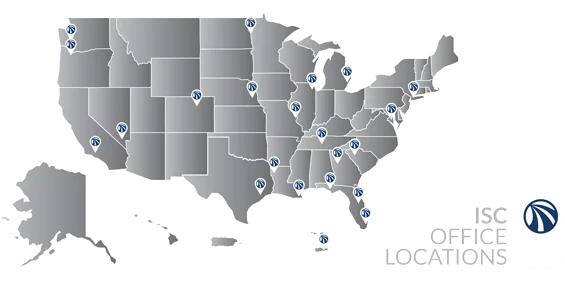The Community disaster recovery process is action-oriented and based upon the core planning principles of: 1) community driven, 2) public involvement, and 3) locally controlled. Communities can choose different paths to recovery; however, in reality recovery is often constrained because the public is unaware of the choices before them, the lack of community support and buy-in, and the emergence of disaster recovery group conflicts. Engaging the community and key stakeholders, providing them with information, and giving them a voice can help to reduce conflict and build consensus of long-term community recovery decisions.
Community disaster recovery starts at the local level and, therefore, requires the support of local communities and its leadership. The incorporation of consensus building, and involvement of decision makers ensures a politically salient process that will foster community unity, improve the quality of the decisions, increase program efficiency, and maintain credibility of the recovery process. The goal of the public information strategy is to ensure that the residents are given accurate and timely information for their use and own individual planning purposes. If information is not distributed quickly, rumors and misinformation spread and erode confidence in applicant management of the recovery operations.
BENEFITS OF COMMUNITY ENGAGEMENT
- Additional Resources
- Better Decisions
- Community Unity
- Compliance with Legislation
- Conflict Resolution
- Democratic Credibility
- Easier Fundraising
- Empowerment
- More Appropriate Results
- Responsive to Community Desires
- Satisfying Public Demand
- Speedier Redevelopment
- Sustainability and Improvement
- Understanding
Communication is a critical element in any organization, and especially so for an organization that deals with the complexity and uncertainty of resolving disaster recovery challenges. The more an organization is people and idea oriented, the more important communication becomes. There are scores of ways an organization may choose to communicate with internal and external stakeholders; however, optimal communication will be accomplished by providing accurate information to all inquiring parties or individuals. Although internal communication is of extreme importance, external communications is paramount to ensuring that community recovery issues are identified and resolved effectively. Creating awareness of the community recovery issues, challenges and opportunities with external power agents, as well as recognizing the community vulnerabilities and hazard risks, is a crucial component of a sustainable and resilient community.
There are a variety of methods to effectively engage community organizations, interact with residents and new public frameworks. Each of the following methods is effective in their own right; however, they are even more powerful in fostering positive improvements and sustainable change when they are combined together. A few of these methods include:
COMMUNITY ENGAGEMENT METHOD
DESCRIPTION
Action Planning
Allows people to produce plans of action at carefully structured sessions at which all those affected work creatively together
Community Remembrance
Community memorials or vigils as a way of remembering the victims of the event, and strengthening the focus, energy and attention on the disaster recovery issues.
Briefing Workshop
Easy-to-organize working sessions held to introduce people to the community recovery issues, get people involved and motivated, identify useful talent and experience, and identify next steps or initiate the development of solutions
Recovery Alternatives Catalog
Alternative catalogs are useful for helping people understand the range of options, the benefits and challenges associated with the recovery choices and facilitate an informed decision-making process with a large number of people.
Community Recovery Center
Community recovery centers are places where communities can get affordable technical help to plan and manage their individual, business or community disaster recovery efforts
Community Forum
Open, multi-purpose events lasting several hours. They are typically conducted in a 3-stage format designed to gather information, generate ideas, and create interaction between interest groups.
Community Disaster Profiling
Building a common picture of the needs and resources of the affected community with active participation of the community.
Community Recovery Workshop/Festivals
Comprise of a multi-disciplinary team to develop and present their redevelopment ideas in public. They are a good way to identify the boundaries of conflict and develop solutions on controversial recovery topics.
Community Disaster Recovery Shops / Office
Provide a permanent way to disseminate information and create dialogue on community recovery issues. These shops are useful for catastrophic disasters that result in long-term recovery outreach and should be located in the affected community.
Recovery Ideas Competition
An effective way of stimulating creative thinking, generating interest and community momentum. These competitions can be just for professionals or open to everyone.
Interactive Displays
Allow people to engage in the community recovery issues, foster the development of solutions and a forum for discussion. Interactive displays can range from blank sheets of paper with one-line questions to complex computer programs that engage participants in a virtual forum.
Open Space Workshops
Provide a highly democratic framework for enabling any group of people to create their own discussions on almost any disaster recovery theme. They are particularly useful for dealing with post-disaster recovery issues and for generating enthusiasm for dealing with urgent recovery issues that need quick action.
Community Recovery Planning Day/Weekend
A good way for getting key parties to work creatively together to devise and explore disaster recovery options. This is an effective method to develop resolution between two or more organizations with opposing positions on recovery issues.
Recovery Project Prioritizing
Prioritizing is a way for a community or group to prioritize recovery projects based on various criteria. This is an effective method when communities and groups must make tough decisions on which recovery projects they should do and which ones they should abandon.
Disaster Reconnaissance Trip
This involves the visitation of the disaster affected area by technical experts, political leaders or other people of influence. These trips are used to familiarize visitors of the disaster impacts, recovery issues, and proposed solutions in order to gain outside `support.
Mobile / Road Show
Mobile units or road shows are used to deliver technical support to the affected community or to combine a series of workshops, exhibitions, or symposiums to generate a critical mass of energy needed on critical community recovery issues.


